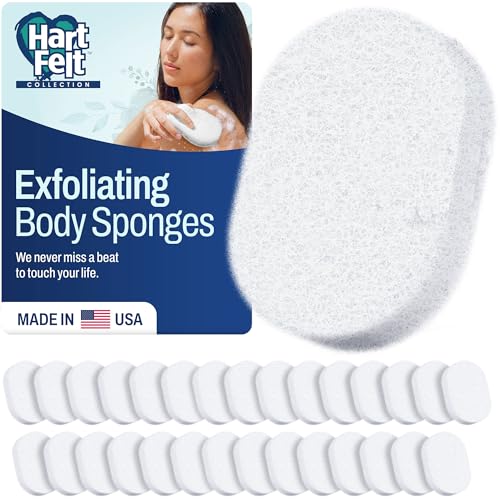




Wet scrubbers are air pollution control devices that remove pollutants from industrial exhaust streams. They are widely used in various industries, including power plants, chemical plants, and steel mills. Wet scrubbers play a crucial role in reducing air pollution and improving the quality of the air we breathe.
So, what pollutants do wet scrubbers remove? Wet scrubbers are highly efficient in removing a wide range of pollutants, including gases, particles, and even odors. They work by using water or other liquid solutions to capture and neutralize pollutants, preventing them from being released into the atmosphere.
Gases: Wet scrubbers are particularly effective in removing acidic gases, such as sulfur dioxide and hydrogen sulfide. These gases are major contributors to acid rain and can have detrimental effects on human health and the environment. Wet scrubbers also remove other harmful gases, including nitrogen oxides and volatile organic compounds (VOCs).
Particles: Wet scrubbers are highly efficient in removing particulate matter from exhaust streams. They capture both large and small particles, including dust, smoke, and ash. This is particularly important in industries such as coal-fired power plants and cement manufacturing, where large amounts of particulate matter are generated.
Odors: Wet scrubbers are also effective in removing unpleasant odors from industrial exhaust streams. They absorb and neutralize odor-causing compounds, improving the air quality in the surrounding areas. This is especially beneficial in industries such as wastewater treatment plants and waste incineration facilities.
In conclusion, wet scrubbers are versatile air pollution control devices that remove a range of pollutants from industrial exhaust streams. They play a crucial role in reducing air pollution, protecting human health, and improving the environment. With their ability to remove gases, particles, and odors, wet scrubbers are an essential tool in achieving cleaner and healthier air.
The Role of Wet Scrubbers in Removing Pollutants
Wet scrubbers play a crucial role in removing pollutants from industrial exhaust gases. They are widely used in various industries to reduce air pollution and meet environmental regulations. These devices are designed to capture and neutralize harmful substances before they are released into the atmosphere.
There are several types of pollutants that wet scrubbers can effectively remove:
Particulate Matter (PM): Wet scrubbers are highly efficient in capturing and removing solid particles from exhaust gases. Particles such as dust, ash, soot, and other solid pollutants are trapped in the liquid droplets of the scrubbing solution.
Sulfur Dioxide (SO2): Wet scrubbers are commonly used to remove sulfur dioxide from flue gases produced by burning fossil fuels. The scrubbing solution, often a mixture of water and chemicals, reacts with sulfur dioxide to form sulfurous acid or other soluble salts that can be easily disposed of or reused.
Nitrogen Oxides (NOx): Wet scrubbers can also effectively remove nitrogen oxides, which are major contributors to air pollution and acid rain. By injecting an alkaline solution into the scrubber, nitrogen oxides are converted into nitric acid or nitrate salts, eliminating their harmful effects.
Heavy Metals: Wet scrubbers are capable of capturing heavy metals such as mercury, lead, cadmium, and arsenic that are released during industrial processes. The scrubbing solution reacts with these metals, forming insoluble compounds that can be easily removed from the system.
Wet scrubbers provide a reliable and efficient solution for reducing pollution emitted by various industries. They help improve air quality and protect the environment by ensuring that harmful pollutants are properly controlled and eliminated.
Disclaimer: The information provided in this article is for educational purposes only.
Understanding Wet Scrubbers and Their Purpose
Wet scrubbers are air pollution control devices that are used to remove pollutants from industrial exhaust gases. They are effective in eliminating hazardous particulate matter, gases, and even odorous compounds from the air we breathe.
The purpose of wet scrubbers is to protect the environment and human health by reducing airborne contaminants. They play a crucial role in various industries, including power plants, chemical factories, metal refining plants, and wastewater treatment facilities.
Wet scrubbers work by passing the polluted gas through a scrubbing liquid, typically water or a mixture of water and chemicals. This liquid helps to capture and remove the pollutants present in the gas stream.
There are several types of wet scrubbers, each designed to target specific pollutants. Some common types include:
- Impingement scrubbers: These scrubbers use high-velocity sprays to trap particles in the liquid.
- Venturi scrubbers: They use a narrow throat to create high-velocity, which causes pollutants to collide with water droplets.
- Packed bed scrubbers: They contain a bed of chemicals or media that removes pollutants through physical and chemical reactions.
- Plate scrubbers: These scrubbers use plates or trays to maximize contact between the gas and the scrubbing liquid.
- Bubble scrubbers: They generate bubbles through the scrubbing liquid to enhance contact between the liquid and the pollutants.
Wet scrubbers can effectively remove various pollutants, including:
- Particles and dust
- Sulfur dioxide (SO2)
- Nitrogen oxides (NOx)
- Chlorine (Cl2)
- Mercury (Hg)
- Ammonia (NH3)
- Hydrogen sulfide (H2S)
- Volatile organic compounds (VOCs)
- Acid gases
By effectively removing these pollutants, wet scrubbers contribute to reducing air pollution and improving air quality, helping to safeguard the environment and human well-being.
The Importance of Pollutant Removal
Pollutant removal is of utmost importance in order to maintain a clean and healthy environment. The release of pollutants into the air can have devastating effects on human health, wildlife, and ecosystems. By utilizing wet scrubbers, these harmful pollutants can be efficiently removed, reducing the negative impact on the environment.
One of the key benefits of wet scrubbers is their ability to remove a wide range of pollutants, including particulate matter, sulfur dioxide, nitrogen oxide, and volatile organic compounds. These pollutants are often emitted by industrial processes such as power plants, refineries, and chemical manufacturing facilities. Without proper control and removal, these pollutants can contribute to air pollution, acid rain, and respiratory issues.
Wet scrubbers work by spraying a liquid solution, typically water or a specialized chemical solution, onto the exhaust gases. This liquid absorbs the pollutants and neutralizes them, effectively removing them from the air stream. The treated air is then released back into the atmosphere, cleaner and less harmful to the environment.
Furthermore, wet scrubbers not only remove pollutants, but they can also help in reducing odors associated with certain industrial processes. This is particularly beneficial in industries such as wastewater treatment plants, food processing facilities, and sewage treatment plants.
Overall, investing in effective pollutant removal technologies like wet scrubbers is crucial for protecting both human and environmental health. By removing harmful pollutants, we can mitigate the adverse effects of air pollution and create a safer and cleaner future for ourselves and future generations.
How Wet Scrubbers Remove Particulate Matter
Wet scrubbers are effective devices for removing particulate matter from industrial emissions. They use a combination of physical and chemical processes to capture and remove pollutants.
When the contaminated gas stream enters the wet scrubber, it passes through a series of water droplets or mist. These droplets act as a medium to capture the particles present in the gas stream.
There are two main mechanisms by which wet scrubbers remove particulate matter:
- Impaction: As the gas stream flows through the wet scrubber, larger particles within the stream collide with the water droplets and are captured through impaction. This process relies on the size and velocity of the particles, as well as the size of the water droplets.
- Interception: Smaller particles that are suspended in the gas stream are captured through interception. As the particles move near the water droplets, they are intercepted and adhere to the surface of the droplets.
Once the particulate matter is captured, it is carried away by the water droplets and collected in a separate container or washed away through a wastewater treatment system.
Wet scrubbers can efficiently remove a wide range of particulate matter, including dust, smoke, fumes, and mist. The effectiveness of the scrubber depends on factors such as the concentration and size of the particles, as well as the design and operation of the scrubber.
In addition to removing particulate matter, wet scrubbers can also remove other pollutants such as sulfur dioxide (SO2), nitrogen oxides (NOx), and volatile organic compounds (VOCs) through the chemical reactions that occur in the scrubbing solution.
Removing Acid Gases with Wet Scrubbers
Wet scrubbers are an effective method for removing acid gases from industrial emissions. Acid gases, such as sulfur dioxide (SO2), hydrogen chloride (HCl), and hydrogen fluoride (HF), are harmful pollutants that can have detrimental effects on human health and the environment.
Wet scrubbers work by using a liquid, typically water, to trap and remove acid gases from the air. The scrubbing liquid is introduced into the scrubber, and as the gas passes through, it comes into contact with the liquid. The acid gases dissolve into the liquid through a series of chemical reactions, effectively removing them from the air stream.
Types of Acid Gases Removed by Wet Scrubbers:
- Sulfur Dioxide (SO2): Wet scrubbers are highly effective at removing sulfur dioxide, a major contributor to acid rain. SO2 emissions are commonly associated with coal-fired power plants and industrial processes.
- Hydrogen Chloride (HCl): Wet scrubbers can efficiently remove hydrogen chloride, a corrosive gas that is released during various manufacturing processes, including metal smelting and chemical production.
- Hydrogen Fluoride (HF): Wet scrubbers are also effective at removing hydrogen fluoride, a toxic gas that is released by aluminum smelters and phosphate fertilizer production facilities.
The effectiveness of wet scrubbers in removing acid gases depends on several factors, including the design of the scrubber, the gas flow rate, the temperature and humidity of the gas, and the reactivity of the acid gases with the scrubbing liquid.
It is important to note that while wet scrubbers can effectively remove acid gases, the captured gases and the resulting scrubber waste need to be properly handled and treated to prevent further environmental contamination.
Eliminating Hazardous Air Pollutants Using Wet Scrubbers
Wet scrubbers are effective pollution control devices used in industrial settings to remove hazardous air pollutants from gas streams. These pollutants can pose serious health and environmental risks and need to be eliminated to improve air quality. Wet scrubbers use a liquid or water-based solution to capture and remove contaminants through a process called absorption or impaction.
Wet scrubbers are particularly effective in removing various hazardous air pollutants, including:
- Sulfuric Acid (H2SO4): Sulfuric acid is a highly corrosive substance produced by many industrial processes. Wet scrubbers can efficiently remove sulfuric acid through chemical reactions with the liquid solution, preventing its release into the environment.
- Hydrochloric Acid (HCl): Hydrochloric acid is another corrosive compound commonly found in industrial emissions. Wet scrubbers can easily capture and neutralize this hazardous pollutant, preventing it from causing respiratory problems and environmental damage.
- Ammonia (NH3): Ammonia is widely used in various industries and can be harmful to human health if released into the atmosphere. Wet scrubbers effectively trap and remove ammonia molecules, reducing its impact on air quality.
- Volatile Organic Compounds (VOCs): VOCs are commonly found in industrial emissions and are a major contributor to air pollution. Wet scrubbers can efficiently remove VOCs, helping reduce their negative effects on human health and the environment.
- Mercury (Hg): Mercury is a toxic heavy metal that can contaminate air and water sources. Wet scrubbers are highly efficient in capturing and removing mercury particles, preventing their release into the atmosphere.
In addition to these specific hazardous air pollutants, wet scrubbers are also effective in removing other pollutants such as particulate matter, acid gases, and various chemical compounds produced by industrial processes. By utilizing wet scrubbers, industries can significantly reduce their emissions of hazardous air pollutants, contributing to cleaner and safer air for everyone.






